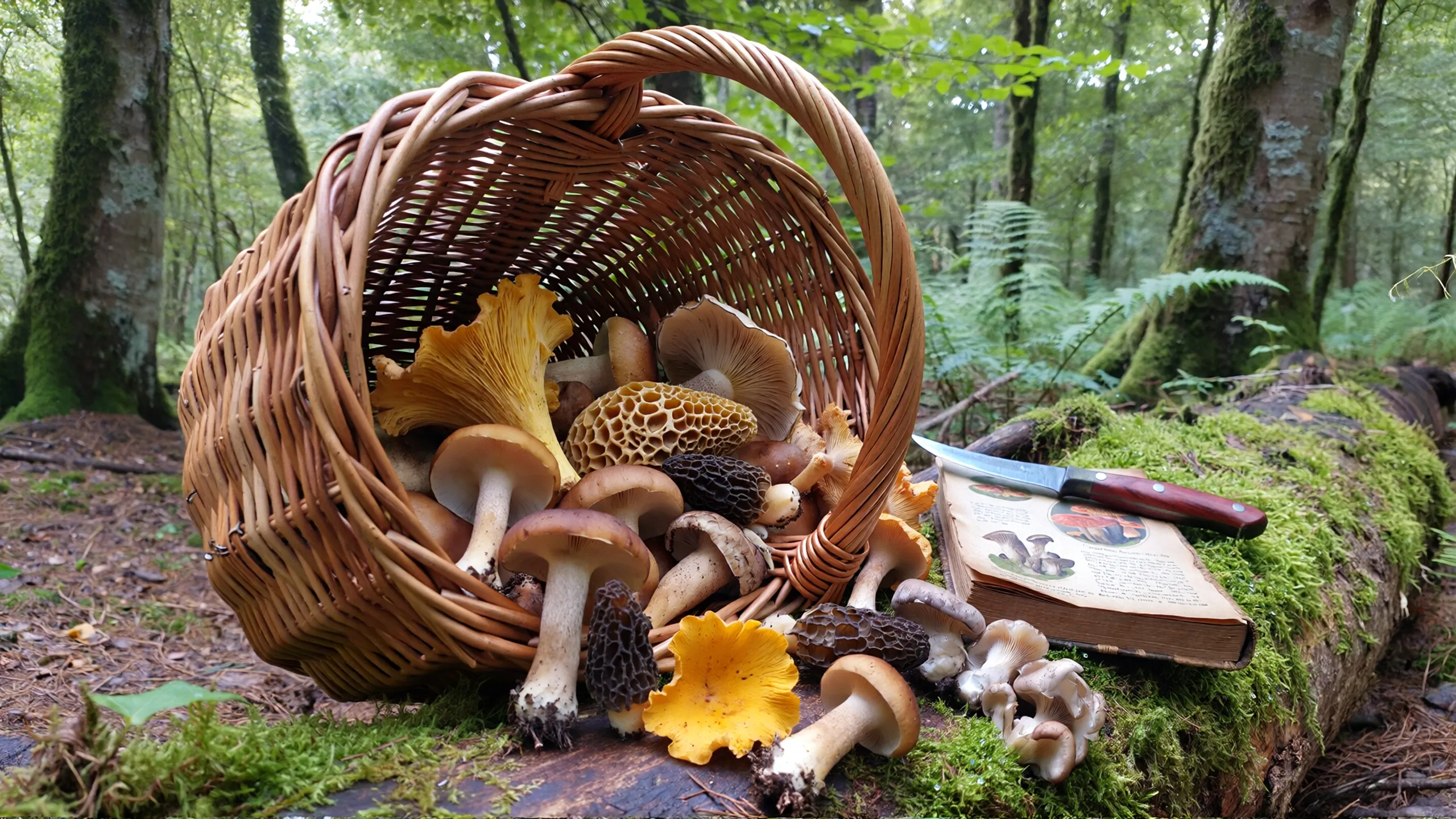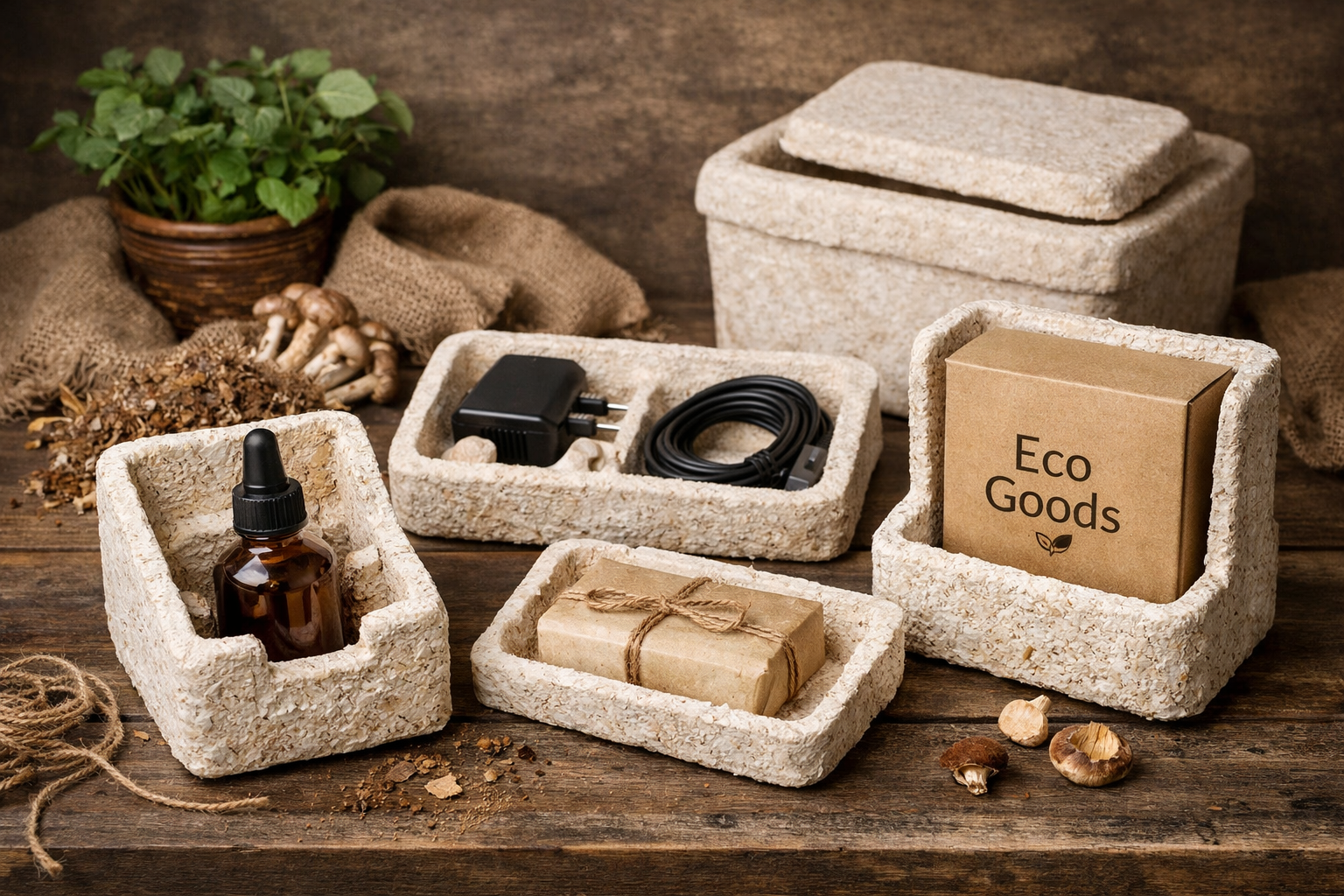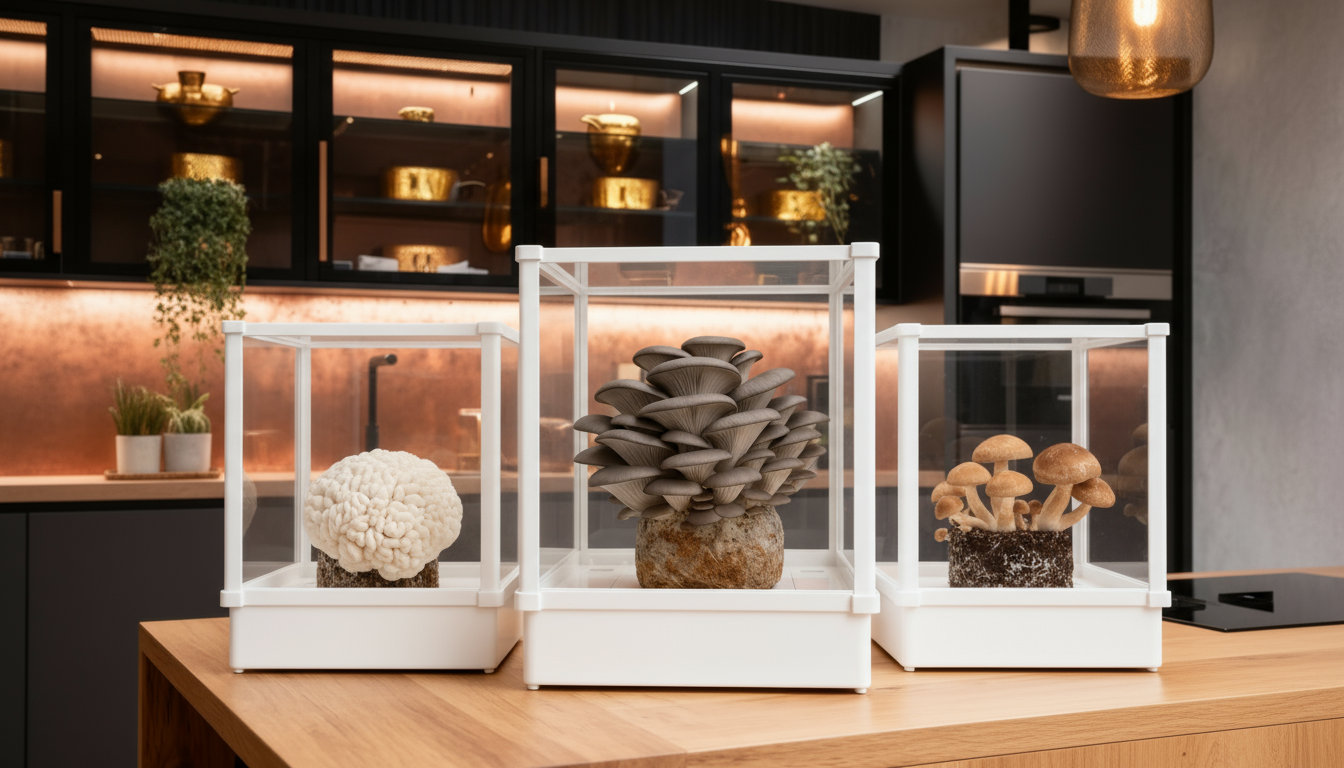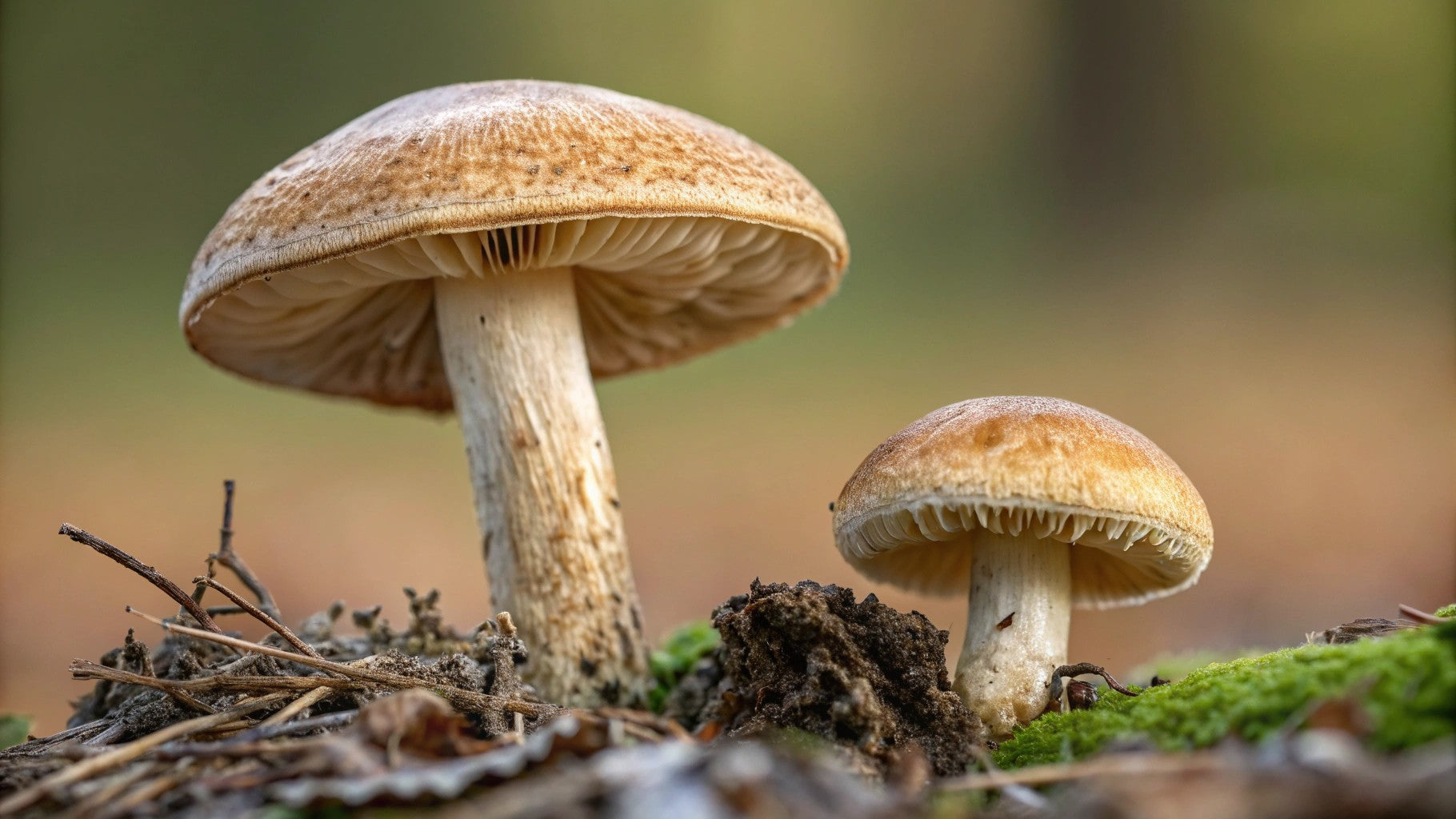Beginner's Guide to Growing Mushrooms at Home: The Smart Kit Revolution
This beginner's guide to growing mushrooms at home with a smart kit will transform your understanding of home cultivation from a complex, technical challenge into an accessible and rewarding hobby. Modern smart growing systems like the Lykyn Smart Mushroom Grow Kit have revolutionized home mushroom cultivation by automating the most difficult aspects of environmental control while making the entire process beginner-friendly and virtually foolproof.
Growing mushrooms at home has traditionally required extensive knowledge of humidity control, temperature management, air circulation, and contamination prevention. Smart growing kits eliminate these barriers by providing automated environmental controls, precise monitoring systems, and user-friendly interfaces that guide beginners through every step of the cultivation process. This technological advancement makes it possible for anyone to successfully grow restaurant-quality mushrooms in their own kitchen.
The benefits of growing mushrooms at home extend far beyond the satisfaction of producing your own food. Home cultivation provides access to fresh, organic mushrooms at a fraction of retail costs, eliminates concerns about pesticides and growing practices, and offers educational opportunities for families to learn about biology, sustainability, and food production. Smart growing kits make these benefits accessible to busy individuals who lack the time to master traditional cultivation techniques.

Understanding Smart Mushroom Growing Technology
How Smart Growing Systems Work
Smart mushroom growing kits represent a significant advancement over traditional cultivation methods by integrating sensors, automation, and smartphone connectivity to create optimal growing conditions with minimal user intervention.
Key components of smart growing systems:
- Advanced humidity control with ultrasonic atomizers and large water reservoirs
- Variable speed ventilation fans with HEPA filtration for clean air exchange
- Precision temperature and humidity sensors with real-time monitoring
- Smartphone apps for remote monitoring and control
- Automated environmental adjustments based on mushroom variety and growth stage
- LED lighting systems optimized for mushroom development
The Lykyn Smart Mushroom Grow Kit exemplifies this technology with its integrated system of fans, sensors, humidifier, and power management that creates perfect growing environments with minimal effort. Users simply select their mushroom type through the app and tap "grow" to begin automated cultivation cycles.
Advantages Over Traditional Growing Methods
Smart growing kits provide numerous advantages that make them ideal for beginners while delivering results that satisfy experienced growers.
Smart kit advantages include:
- Elimination of guesswork through automated environmental controls
- Consistent results regardless of external weather or seasonal conditions
- Real-time monitoring and alerts preventing cultivation failures
- Educational interfaces that teach proper cultivation principles
- Space-efficient designs suitable for countertop or small-space growing
- Reduced risk of contamination through integrated filtration systems
- Lower long-term costs compared to purchasing premium mushrooms
Customer testimonials highlight these benefits: "Really impressed with how well this controls humidity. My oyster mushrooms are forming beautiful clusters with none of the elongated stems I used to get with my grow blocks."
Technology That Makes Growing Simple
The sophisticated technology in smart growing kits operates seamlessly in the background, allowing beginners to focus on enjoying the growing process rather than troubleshooting technical issues.
Automated features that simplify cultivation:
- Dynamic humidity control that adjusts automatically based on mushroom needs
- Intelligent air circulation preventing stagnation while maintaining optimal CO2 levels
- Temperature regulation maintaining species-specific optimal ranges
- Growth stage recognition adjusting conditions as mushrooms develop
- Contamination prevention through continuous air filtration
- User notifications and guidance through smartphone applications
Getting Started: Setup and Initial Configuration

Unboxing and Initial Setup
Setting up your smart mushroom growing kit requires minimal technical knowledge while establishing the foundation for successful cultivation.
Step-by-step setup process:
- Unbox and inventory components: Verify all parts including main unit, water tank, sensors, cables, and accessories
- Choose optimal location: Select stable surface away from direct sunlight with access to power outlet
- Install smartphone app: Download the companion app and create user account for monitoring and control
- Connect power and sensors: Attach USB-C power cable and LED grow light connections
- Fill water reservoir: Add distilled or filtered water to the 2-liter capacity tank
- Calibrate sensors: Follow app instructions for initial sensor calibration and testing
- Run system check: Verify all components function properly before adding growing substrates
The Lykyn system features laboratory-grade sensors with innovative mushroom cap shield designs that prevent water droplets from affecting readings, ensuring accurate environmental monitoring from the start.
Choosing Your First Mushroom Variety
Selecting appropriate mushroom varieties for beginners ensures early success and builds confidence for more challenging cultivation projects.
Best beginner mushroom varieties:
- Oyster mushrooms: Fast-growing, forgiving, and highly productive
- Shiitake mushrooms: Reliable results with excellent flavor and market value
- Lion's mane mushrooms: Unique appearance and texture with good success rates
- Reishi mushrooms: Slower growing but valuable for medicinal applications
- Wine cap mushrooms: Robust variety suitable for beginners seeking unique flavors
Most smart growing kits include substrate blocks or growing media specifically prepared for these beginner-friendly varieties, eliminating the complexity of substrate preparation and sterilization.
Initial Configuration and App Setup
Modern smart growing kits rely on smartphone apps to provide user interfaces, monitoring capabilities, and automated control systems.
App configuration process:
- Create user profile: Set up account with growing experience level and preferences
- Connect to kit: Pair smartphone with growing kit through Bluetooth or WiFi
- Select mushroom variety: Choose from pre-programmed growing profiles for different species
- Configure notifications: Set up alerts for water refills, harvest timing, and maintenance needs
- Establish growing schedule: Review and customize automated growing cycles
- Access educational content: Explore built-in guides and troubleshooting resources
The app becomes your central hub for monitoring progress, receiving guidance, and learning about mushroom cultivation principles throughout your growing journey.

Daily Care and Maintenance Made Simple
Understanding Automated Systems
Smart growing kits handle most daily maintenance tasks automatically, but understanding these systems helps optimize results and troubleshoot any issues.
Automated maintenance functions:
- Humidity management: Ultrasonic atomizers maintain optimal moisture levels without oversaturation
- Air circulation: Variable speed fans provide fresh air exchange while preventing drafts
- Temperature regulation: Heating elements or cooling systems maintain species-specific ranges
- Light cycles: LED systems provide appropriate photoperiods for mushroom development
- Water level monitoring: Sensors track reservoir levels and alert users when refills are needed
These automated systems typically require minimal intervention, allowing beginners to observe and learn without constant manual adjustments.
Simple Daily Tasks
While automation handles most environmental control, successful mushroom growing requires some simple daily attention that becomes routine quickly.
Daily care routine:
- Check app notifications: Review any alerts or status updates from the growing system
- Visual inspection: Observe mushroom development and look for any unusual changes
- Water level monitoring: Ensure adequate water remains in the humidification reservoir
- Note growth progress: Track development stages for learning and harvest timing
- Environmental assessment: Verify the kit remains in optimal location and position
These simple tasks typically require less than five minutes daily while providing valuable learning opportunities about mushroom biology and cultivation principles.
Weekly Maintenance Tasks
Weekly maintenance ensures optimal performance and extends the life of your smart growing system while maintaining ideal growing conditions.
Weekly maintenance checklist:
- Deep clean water reservoir: Empty, clean, and refill with fresh distilled water
- Filter inspection: Check air filters and clean or replace as needed
- Sensor cleaning: Gently clean humidity and temperature sensors following manufacturer guidelines
- App updates: Install any software updates for improved functionality
- Growth documentation: Take photos and notes tracking development progress
- System performance review: Assess overall system function and address any concerns
Regular maintenance prevents problems before they affect mushroom development while building familiarity with system components and operation.
Monitoring Growth and Development
Understanding Mushroom Growth Stages
Recognizing different growth stages helps optimize care and determine optimal harvest timing for maximum quality and yield.
Mushroom development stages:
- Inoculation and colonization: Mycelium spreads through growing substrate (1-3 weeks)
- Primordia formation: Tiny mushroom pins appear as small bumps (3-7 days)
- Rapid development: Mushrooms expand quickly in size and develop characteristic shapes (3-10 days)
- Maturation: Mushrooms reach full size and optimal harvest condition (1-3 days)
- Spore release: Over-mature mushrooms begin releasing spores (varies by species)
Understanding these stages helps anticipate needs and optimize environmental conditions for each development phase.
Using Smart Monitoring Features
Smart growing kits provide detailed monitoring capabilities that help beginners learn while ensuring optimal growing conditions.
Smart monitoring capabilities:
- Real-time environmental data: Continuous tracking of temperature, humidity, and air quality
- Growth stage recognition: Automated identification of development phases with appropriate adjustments
- Historical data logging: Tracking trends and patterns for optimization and troubleshooting
- Photo documentation: Built-in cameras or photo prompts for visual growth tracking
- Performance analytics: Analysis of growing conditions and outcomes for continuous improvement
These monitoring features transform growing from guesswork into data-driven cultivation that improves with each growing cycle.
Identifying Healthy vs. Problem Growth
Learning to recognize healthy mushroom development versus potential problems enables prompt intervention and successful harvests.
Signs of healthy growth:
- Consistent colonization patterns with white, fluffy mycelium
- Proper pin formation with appropriate density and distribution
- Normal development timing according to species characteristics
- Good color, texture, and shape development as mushrooms mature
- Absence of off-odors or unusual discoloration
Warning signs requiring attention:
- Green, black, or unusual colored contamination
- Slow or stalled development beyond normal timeframes
- Excessive moisture or dry conditions despite automated controls
- Unusual odors suggesting bacterial or fungal contamination
- Abnormal mushroom shapes, colors, or development patterns
Harvesting Your First Mushrooms
Determining Optimal Harvest Timing
Proper harvest timing significantly impacts mushroom quality, flavor, and storage life while maximizing yields from your growing efforts.
Harvest timing indicators:
- Cap development: Harvesting before caps flatten completely maintains tender texture
- Spore release: Collecting before heavy spore production preserves appearance and flavor
- Size optimization: Balancing size with tenderness for optimal culinary quality
- Cluster harvesting: Taking entire clusters at once for uniform development
- Species-specific timing: Understanding unique characteristics of different mushroom varieties
Smart growing apps often include harvest timing guidance with visual cues and notifications to help beginners optimize their harvests.
Proper Harvesting Techniques
Using correct harvesting methods ensures clean cuts that promote additional flushes while maintaining mushroom quality.
Harvesting best practices:
- Clean tools: Use sharp, sterile knives or scissors for clean cuts
- Cut at base: Harvest by cutting stems close to substrate rather than pulling
- Handle gently: Minimize bruising through careful handling during collection
- Immediate processing: Clean and store mushrooms promptly after harvest
- Substrate care: Avoid disturbing remaining mycelium in substrate after harvest
Proper harvesting techniques often enable multiple flushes from the same substrate, significantly increasing total yields from each growing cycle.
Post-Harvest Care and Storage
Immediate post-harvest handling affects mushroom quality and storage life while preparing your growing system for subsequent flushes.
Post-harvest procedures:
- Mushroom cleaning: Remove substrate debris and trim stem ends for presentation
- Immediate refrigeration: Store fresh mushrooms in breathable containers at 35-38°F
- Preservation options: Consider drying, freezing, or cooking for longer-term storage
- System cleaning: Clean growing chamber and prepare for next growing cycle
- Substrate assessment: Evaluate substrate condition for additional flush potential
Following proper post-harvest procedures maximizes the value of your growing efforts while maintaining system readiness for continuous production.
Troubleshooting Common Beginner Issues
Environmental Control Problems
While smart systems automate most environmental management, understanding common issues helps beginners optimize results and prevent problems.
Common environmental issues:
- Humidity fluctuations: Usually resolved through water refills or sensor cleaning
- Temperature variations: Often caused by location changes or external heat sources
- Air circulation problems: Typically related to blocked filters or fan obstructions
- Lighting issues: Usually simple electrical connections or bulb replacements
- App connectivity: Commonly resolved through router proximity or app updates
Most environmental issues have simple solutions that smart systems help identify through monitoring and diagnostic features.
Growth and Development Issues
Understanding normal variation versus genuine problems helps beginners respond appropriately to growing challenges.
Normal variations:
- Slight differences in development timing based on environmental factors
- Natural variations in mushroom size, shape, and appearance
- Seasonal influences on growth rates despite controlled environments
- Substrate-to-substrate variations in productivity and timing
Genuine problems requiring intervention:
- Contamination from bacteria, molds, or other microorganisms
- Complete growth stalls lasting beyond normal timeframes
- Widespread mushroom abnormalities or development failures
- System malfunctions affecting environmental controls
When to Seek Additional Help
Knowing when to seek guidance versus continuing troubleshooting efforts helps beginners avoid frustration while learning effectively.
Situations requiring expert guidance:
- Persistent contamination issues despite following protocols
- Repeated system failures or technical malfunctions
- Consistent poor results across multiple growing cycles
- Safety concerns related to unusual growth or contamination
- Advanced techniques beyond basic kit capabilities
Most smart growing kit manufacturers provide excellent customer support and troubleshooting resources specifically designed for beginners.
Expanding Your Growing Skills
Moving Beyond Basic Kits
Success with smart growing kits often inspires interest in expanding cultivation capabilities and exploring more advanced techniques.
Expansion opportunities:
- Multiple kit systems: Running several kits simultaneously for continuous harvests
- Substrate preparation: Learning to prepare custom growing media for specific varieties
- Advanced species: Exploring challenging mushrooms like reishi or cordyceps
- Seasonal cultivation: Adapting techniques for different times of year
- Commercial considerations: Scaling up for farmers market sales or personal business
The Lykyn Smart Mushroom Grow Kit provides an excellent foundation for developing skills that transfer to more advanced cultivation methods.
Learning Advanced Techniques
Smart growing kits provide educational foundations for understanding more sophisticated cultivation approaches.
Advanced techniques to explore:
- Liquid culture propagation: Creating custom inoculants for substrate preparation
- Substrate sterilization: Preparing growing media for specific mushroom varieties
- Environmental optimization: Fine-tuning conditions for maximum yields and quality
- Strain selection: Choosing and maintaining superior mushroom genetics
- Integrated pest management: Preventing and managing cultivation challenges
Many of these techniques build naturally on the foundations learned through smart kit cultivation.
Building a Mushroom Growing Community
Connecting with other growers enhances learning while providing support and inspiration for continued cultivation adventures.
Community building opportunities:
- Local mycological societies: Joining groups focused on mushroom cultivation and identification
- Online forums: Participating in digital communities sharing experiences and advice
- Workshops and classes: Attending educational events to expand knowledge and skills
- Growing partnerships: Collaborating with friends and family on cultivation projects
- Teaching others: Sharing knowledge gained through successful growing experiences
Building community connections enhances the enjoyment and educational value of mushroom cultivation while providing ongoing support and inspiration.
Economic Benefits and Cost Analysis
Initial Investment vs. Long-term Savings
Understanding the economics of home mushroom cultivation helps justify the initial investment while planning for long-term savings.
Initial investment considerations:
- Smart growing kit: One-time purchase providing years of growing capability
- Ongoing substrate costs: Replacement growing media for continued production
- Utility costs: Minimal electricity usage for automated systems
- Maintenance supplies: Occasional filter replacements and cleaning materials
Long-term savings potential:
- Retail mushroom costs: Premium varieties often cost $8-15 per pound retail
- Home production yields: Smart kits typically produce 1-2 pounds per growing cycle
- Quality advantages: Fresh, organic mushrooms with superior flavor and nutrition
- Convenience benefits: Always having fresh mushrooms available for cooking
Calculating Return on Investment
Most smart growing kits pay for themselves within the first year through savings on mushroom purchases.
ROI calculation factors:
- Average retail cost of premium mushrooms in your area
- Estimated annual mushroom consumption for your household
- Growing kit productivity and substrate costs
- Quality and freshness premiums compared to store-bought mushrooms
Typical ROI timeline:
- 3-6 months: Break-even point for moderate mushroom consumers
- 6-12 months: Full cost recovery for most households
- Year 2 and beyond: Pure savings and value creation
Additional Economic Opportunities
Successful home cultivation can create additional economic benefits beyond personal consumption savings.
Value-added opportunities:
- Sharing with friends: Building social connections through fresh mushroom gifts
- Farmers market sales: Generating income from excess production
- Educational services: Teaching others about home mushroom cultivation
- Substrate composting: Creating valuable soil amendments from spent growing media
- Equipment longevity: Smart kits designed for years of reliable operation
Health and Nutrition Benefits
Nutritional Value of Home-Grown Mushrooms
Fresh, home-grown mushrooms provide superior nutritional value compared to store-bought varieties that may have lost nutrients during storage and transport.
Key nutritional benefits:
- High-quality protein: Complete amino acid profiles supporting muscle health
- B-vitamin complex: Essential nutrients for energy metabolism and nervous system function
- Selenium and antioxidants: Natural compounds supporting immune system and cellular health
- Fiber and prebiotics: Digestive health support through beneficial gut bacteria nutrition
- Low calorie density: Satisfying nutrition with minimal caloric impact
Freshness and Quality Advantages
Home cultivation provides mushrooms at peak freshness when nutritional content and flavor are optimized.
Freshness benefits:
- Peak harvest timing: Collecting mushrooms at optimal maturity for maximum nutrition
- Immediate consumption: Minimizing nutrient loss through extended storage
- Organic growing practices: Controlling inputs and avoiding synthetic chemicals
- Variety access: Growing specialty mushrooms unavailable in local markets
- Year-round availability: Consistent fresh mushroom access regardless of season
Food Safety and Quality Control
Home cultivation provides complete control over growing conditions and quality assurance.
Quality control advantages:
- Known growing conditions: Complete transparency in cultivation practices
- Contamination prevention: Controlled environments reducing foodborne illness risks
- Chemical-free production: Avoiding pesticides and synthetic growth enhancers
- Optimal storage: Immediate refrigeration and proper handling from harvest to consumption
- Freshness guarantee: Consuming mushrooms within hours or days of harvest
Environmental Impact and Sustainability
Sustainable Food Production
Home mushroom cultivation represents one of the most sustainable forms of food production available to individuals.
Sustainability benefits:
- Resource efficiency: High protein production with minimal water and energy inputs
- Waste reduction: Converting agricultural byproducts into valuable food
- Local production: Eliminating transportation emissions and packaging waste
- Circular economy: Using spent substrates as compost and soil amendments
- Biodiversity support: Encouraging understanding and appreciation of fungal ecosystems
Reducing Environmental Footprint
Smart growing kits minimize environmental impact through efficient design and automated resource management.
Environmental efficiency features:
- Energy-efficient LED lighting: Minimal electricity consumption for optimal growth
- Water conservation: Closed-loop humidity systems reducing water waste
- Substrate optimization: Maximizing yields from minimal growing media inputs
- Packaging reduction: Eliminating single-use containers and plastic packaging
- Longevity design: Durable construction reducing replacement needs and waste
Conclusion: Your Journey to Mushroom Growing Success
This beginner's guide to growing mushrooms at home with a smart kit demonstrates how modern technology has transformed home cultivation from a complex hobby into an accessible and rewarding activity suitable for anyone interested in fresh, healthy food production. The Lykyn Smart Mushroom Grow Kit exemplifies how intelligent automation, user-friendly design, and educational support can guide beginners from setup to successful harvests while building knowledge and confidence for continued growing adventures.
Smart growing kits eliminate the traditional barriers to home mushroom cultivation by automating environmental controls, providing real-time monitoring, and offering educational guidance throughout the growing process. This technology makes it possible for busy individuals to successfully grow restaurant-quality mushrooms with minimal time investment while learning valuable skills about food production, biology, and sustainability.
The benefits of home mushroom cultivation extend far beyond the immediate satisfaction of harvesting your own fresh food. Growing mushrooms provides cost savings, nutritional advantages, environmental benefits, and educational opportunities that enrich daily life while building self-sufficiency skills. Smart growing kits make these benefits accessible to everyone, regardless of experience level or available time.
Success with smart growing kits often leads to expanded interest in more advanced cultivation techniques, connecting with growing communities, and exploring the broader world of mycology and sustainable food production. The skills and knowledge gained through automated smart systems provide excellent foundations for continued learning and growing adventures.
Whether you're motivated by fresh food access, cost savings, environmental concerns, or simple curiosity about mushroom cultivation, smart growing kits provide the perfect entry point into this rewarding hobby. The combination of modern technology, educational support, and proven growing methods ensures success while building confidence for continued cultivation adventures.
Start your mushroom growing journey today with a smart growing kit and discover the satisfaction, savings, and sustainability benefits of producing your own fresh, organic mushrooms at home. The technology is proven, the process is simple, and the rewards are immediate and long-lasting.














Share:
How to Grow Mushrooms from Spores: The Complete Step-by-Step Guide
How to Plant Mushroom Spores: Complete Step-by-Step Guide for Successful Cultivation